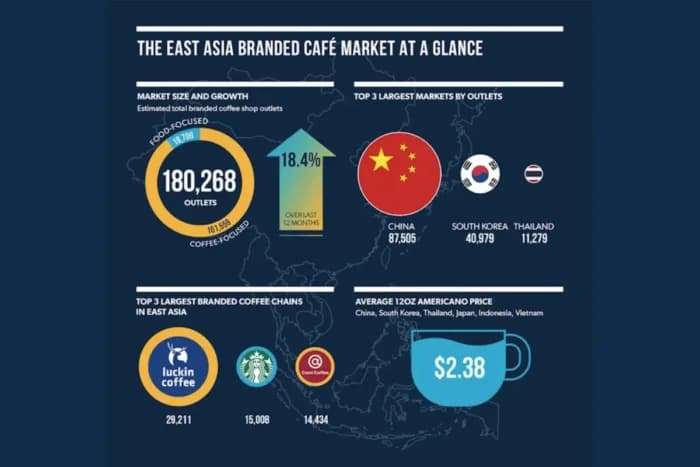The global coffee industry is approaching a critical turning point as growing consumer demand continues to outpace production, exposing long-term vulnerabilities in the supply chain. According to recent insights shared by Ennio Cantergiani, Managing Director of Switzerland-based l’Académie du Café, the world is facing an increasingly unstable balance between how much coffee it drinks and how much it can sustainably produce.
Speaking through a series of detailed market updates published on his LinkedIn profile, Cantergiani outlines a troubling pattern: while global coffee consumption is expanding steadily — driven by rising demand in emerging economies, the proliferation of specialty coffee culture, and evolving urban lifestyles — production remains volatile and increasingly constrained.
Production Under Pressure
Cantergiani identifies several structural and environmental factors putting pressure on the world’s coffee producers. These include:
-
Climate instability, particularly erratic rainfall and droughts in key producing regions
-
Aging farming populations and lack of generational renewal in rural areas
-
Low incentives and limited support for smallholder farmers
-
Persistent plant diseases such as coffee leaf rust
In addition, other macroeconomic and logistical constraints are compounding the situation. These include reduced yields in Brazil and Vietnam, supply chain disruptions such as those witnessed in the Suez Canal, increased demand from China and India, and labor shortages caused by rural-to-urban migration or immigration restrictions.
Adding to the complexity is the impact of new regulatory frameworks — particularly the European Union’s deforestation legislation — which introduces new compliance burdens on coffee-exporting countries.
Consumption Boom: China as a Case Study
Cantergiani cites China as a key example of how non-traditional markets are reshaping global consumption patterns. In the 2024/25 period, Chinese coffee consumption is estimated to have reached 6.3 million 60-kg bags — a nearly 150% increase over the past decade.
Despite rapid growth, per capita consumption in China remains far lower than in Western countries, indicating significant future potential. Market analysis also shows that China’s coffee sector grew by 31% in 2021 and is projected to maintain a compound annual growth rate (CAGR) of 9.63% through 2025.
This surge in demand from Asia and other emerging markets is placing unprecedented strain on global supply.
Market Signals: Futures Prices and Open Interest
In a separate analysis, Cantergiani examines how market dynamics are reinforcing concerns on the trading side. He highlights the importance of open interest — a measure of outstanding coffee futures contracts — as an indicator of market sentiment.
As of March 18, 2025, open interest in Arabica coffee futures stood at 168,654 contracts, up slightly from the previous week but down 21.89% compared to the same period last year. During the same window, Arabica prices traded between $3.80 and $3.90 per pound, following a historic spike above $4 in mid-February.
According to Cantergiani, price increases combined with falling open interest may indicate short covering or lack of fresh investment — potentially signaling that the rally could be unsustainable in the absence of stronger fundamentals.

The Hidden Indicator: Certified Coffee Stocks
Beyond market pricing, Cantergiani draws attention to a less frequently discussed but critical element of the coffee supply chain: certified coffee stocks held at Intercontinental Exchange (ICE) warehouses in cities such as New York, Hamburg, and Barcelona.
These stocks represent exchange-approved coffee that meets quality and grading standards, and they serve as a visible reserve for the international coffee trade.
By the end of January 2025, certified Arabica stocks had dropped to approximately 900,000 bags — their lowest level since 1999 — following a monthly decline of nearly 100,000 bags. Robusta stocks in London remained similarly tight.
This drop, Cantergiani explains, stems from a combination of drought in Brazil, logistical bottlenecks, and the increasing diversion of high-quality coffee to the specialty segment instead of exchange warehouses.
Historically, there is an inverse correlation between certified stock levels and coffee futures prices — meaning that as stocks fall, prices tend to rise.
No Return to Post-Pandemic Prices
Based on current trends, Cantergiani concludes that the global coffee market is unlikely to see a return to the low prices witnessed during and immediately after the COVID-19 pandemic. Instead, prices are expected to stabilize within a higher range — potentially between 250 to 500 US cents per pound over the coming years.
This shift carries significant implications:
-
For producers, tighter supply may present pricing opportunities — especially for those able to meet exchange or specialty standards
-
For traders and importers, monitoring open interest and certified stock levels is increasingly essential for strategic positioning
-
For roasters and retailers, elevated prices may compress margins and necessitate greater transparency and efficiency in sourcing
-
For consumers, higher retail prices and greater focus on origin traceability are likely to become the norm
A System Under Strain
Cantergiani’s analyses paint a picture of a global coffee system at a crossroads — where environmental risks, demographic shifts, financial signals, and regulatory pressures are colliding with surging demand. The result is a fragile balance that could define the industry’s next decade.
“The future of coffee,” he notes, “depends not only on how much we drink — but on how well we manage, protect, and invest in what we grow.”


